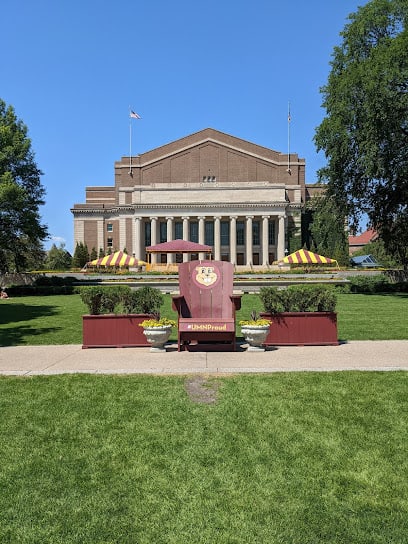University of Minnesota
Dr. Ronald D. Cohen, Retired
Indiana University Northwest
Gary Indiana
U.S.A.
I graduated from the University of California, Berkley in June 1962 During my senior year, Clarke Chambers, professor from the University of Minnesota was hired to teach the recent US history course. I talked with Chambers about going to graduate school. I applied to Minnesota which became my home for the next five years.
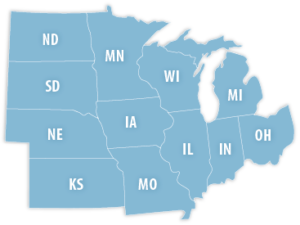
Since I had followed Professor Chambers from Berkeley, I assumed I would take his recent US history seminar. This was not to be since he was teaching a seminar on the history of the Mesabi Iron Range in northeastern Minnesota—where Bob Dylan grew up in Hibbing, and who had arrived at the university in 1959 but had left in late 1960.
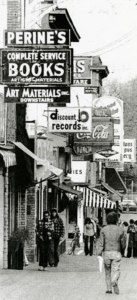
This didn’t sound appealing, so I switched to Darrett Rutman’s colonial America seminar. I first lived in a rooming house, then in a series of apartments, with my small collection of folk records (Folkways, Vanguard, Elektra, etc) and books. Minneapolis had a rather thriving folk music scene, including the Ten O’Clock Scholar club in Dinkytown, the off campus community where I would live, and where Dylan had performed. I missed performances by Spider John Koerner who was in one of my English classes, Dave “Snaker” Ray, and Tony “Little Sun” Glover, a wonderful white blues band.
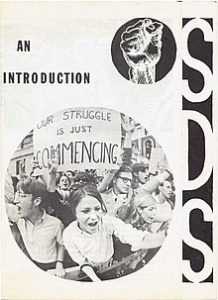
Minneapolis was also pretty much off the beaten track of radical politics at the time, although I did become a national member of Students for a Democratic Society. I shed my rather conservative family’s suburban politics and become supportive of civil rights and the development anti-war movement, which I easily connected with my love for folk music.
In 1965 I was a teaching assistant in a U.S. history survey course. One day a student came up at the end of class and mentioned his brother was a folk singer, which certainly intrigued me. David Zimmerman mentioned that his brother was Bob Dylan! By that time I was married and David soon began to drop by our apartment, bringing gifts of Columbia Records (he worked for the company). Once he invited me to a Dylan concert in Minneapolis, but I declined. Dumb me. Still, I kept up with folk music trends, now including Joan Baez, Peter, Paul and Mary, the Limeliters, and others, sparking the amazing folk music revival of mid-decade.
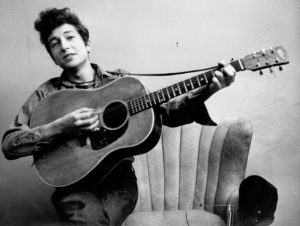
My PhD thesis was entitled “Colonial Leviathan: The Foreign Affairs of the New England Colonies in the 17th Century.” My first job was at Hartwick College in Oneonta, New York, located upstate from New York City in the Finger Lakes district. I taught Colonial American history but mostly the U.S. history survey classes. Hartwick was quite conservative, with few black students and by my second year no black faculty, so I became the advisor to the black students organization.
In 1969, I accepted a post-doctoral research and teaching fellowship at Macalester College, in St Paul, Minnesota. We moved back to the Twin Cities and rented the bottom floor of an old mansion near the governor’s house. During our year in St. Paul we attended a New Los City Ramblers concert on campus, but not much else since we had babysitting duties. In the spring of 1970, after the invasion of Cambodia and shootings of students at Kent State (Ohio) and Jackson State (Mississippi), Macalester joined other colleges in shutting down as the anti-war movement rapidly escalated.
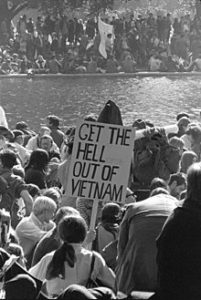
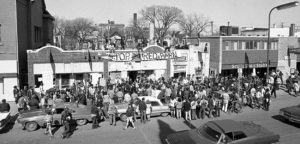
Elizabeth, baby Alysha, and I joined an anti-war march to the state capitol. I became heavily involved in the campus protest movement participating in debates at a local nursing dorm, etc. Ex Vice President of the U.S. Hubert Humphrey was now teaching at Macalester, and I saw him once at a campus debate over Vietnam.
In 1970, I applied for a position in the history department at Indiana University Northwest (IUN) in Gary, Indiana. I was hired for a salary of $11,000 per year. So, after the political excitement of Macalester and St. Paul, we moved to tranquil Valparaiso, Indiana, just east of the IUN campus in Gary. I was now an Assistant Professor of History in a small department in a strictly commuter, regional campus in the Indiana University system. I was small fish in a much larger pond. My life was set for the next half century and more.
We first lived in an apartment near downtown Valparaiso, but soon purchased a nineteenth century farm house north of town with a chicken coop, small yard, and no close neighbors. My growing collection of folk books and records now had a secure home. In 1974 and for a variety of reasons my wife Elizabeth and children departed downstate to Indianapolis. I moved to the Miller neighborhood of Gary, where I quickly purchased an old lake cottage for $11,000.
By the mid-1970s my research interests now focused on the history of children, schooling, and the family throughout U.S. history. My publications focused on the history of the Gary public schools, as well as the history of the city. Children of the Mill: Schooling and Society in Gary, Indiana, 1906-1960. When Children of the Mill was about to be published, I decided to break into a new field, the history of folk music, which has captured my life ever since. My house in Gary, which I shared with my new partner Nancy and her two daughters, became filled with folk music books, records, magazines, and assorted other artifacts.

I had met Barbara Brenzel at History of Education Society meetings, who was married to a jazz musician. In 1989, when staying with them in New York, I mentioned I was interested in researching the folk music revival and they connected me with their friend Dave Van Ronk, a noted Greenwich Village musician and raconteur. I called Dave and not only interviewed him at his apartment, but he also gave me some very valuable leads. I was now launched on my folk marathon. My interviews had begun the previous February when Eric Andersen, a prominent folk singer-songwriter, was giving a concert on the IUN campus.
In June 1989, I took off for Stockholm, Sweden where Israel “Izzy’ Young, founder of the Folklore Center in Greenwich Village in New York City in 1957, now lived . I stayed in his apartment for a week, interviewing him, reading through his scrapbooks and notebooks. Luckily Tom Paley, a former member of the New Lost City Ramblers, was visiting Izzy and I also interviewed him. I was on my way. Izzy and I roomed together at conferences, he stayed at our house, and we remained close until his death in 2019.
Following my trip to Sweden, I went west to California and made some wonderful contacts. I interviewed Barry Olivier, who had long run the Berkeley Folk Festival, Ed Pearl, the founder of the Ash Grove nightclub in Los Angeles, Irwin Silber, the longtime editor of Sing Out! and his wife the noted singer Barbara Dane, and various others. With each contact I also attempted to obtain as many artifacts as possible. Manny Greenwhill, Joan Baez’s manager, gave me a rare poster of a Baez/Dylan concert.
Whenever I returned to Gary I had a load of micro-cassette interview tapes and a better idea for a book on the folk music revival from 1940-1970. First, however, I planned a conference at IU-Bloomington to bring together as many prominent folks as possible to discuss their folk music experiences and also play some music.
With substantial funding from the Indiana Humanities Council and the crucial support of the Folklore Institute at Indiana University, I organized “‘Wasn’t That A Time!’: The Richard Reuss Memorial Folk Music Conference” on the Bloomington campus in mid-May 1991. Reuss (1940-86) had been an influential folklorist, with particular interests in Woody Guthrie and the folk revival. His papers had been donated to Indiana University, where he had received his PhD in Folklore.
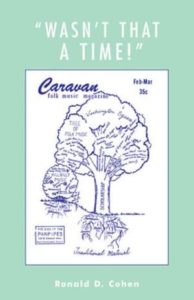 I attracted twenty-five musicians, writers, and assorted others, who had been active in the Revival in the ‘50s and ‘60s. They participated in nine panels, a Friday night concert, Saturday night square dance. Most of the participants, including myself, stayed in a college dorm; not too comfortable but free. Ralph Lee Smith had launched his folk music book series for Scarecrow Press, “American Folk Music and Musicians,” and agreed to publish the conference’s proceedings as his first title. “Wasn’t That A Time!”: Firsthand Accounts of the Folk Music Revival appeared in 1995.
I attracted twenty-five musicians, writers, and assorted others, who had been active in the Revival in the ‘50s and ‘60s. They participated in nine panels, a Friday night concert, Saturday night square dance. Most of the participants, including myself, stayed in a college dorm; not too comfortable but free. Ralph Lee Smith had launched his folk music book series for Scarecrow Press, “American Folk Music and Musicians,” and agreed to publish the conference’s proceedings as his first title. “Wasn’t That A Time!”: Firsthand Accounts of the Folk Music Revival appeared in 1995.
I included an Introduction, chapters by John Cohen, Irwin Silver, Dick Weissman, Irene and Ellen Kossoy, Izzy Young, and assorted others. There was also a bibliography as well as numerous photos and other illustrations. This launched Ralph’s book series, which would soon become an important part of my life. It also kickstarted my growing list of folk music publications.
My interest in folk music began to dominate my time and travels. In late 1995, I gave the paper “Music Goes To War: California, 1940-1945,” at the “California and World War II” Conference in San Marino, California. The next year I gave my presentation at the “Hard Travelin’: The Life and Legacy of Woody Guthrie” conference sponsored by the Rock and Roll Hall of Fame in Cleveland, Ohio.
In 1998 I flew to the Netherlands to give my paper “Singing Subversion: Folk Music and the Counterculture in the 1950s” at the conference “Beat Culture and Beyond: American Counterculture in the 1950s“. My travels would not slow down for a while, but I began to focus more on researching and publishing books.

My interviewing increased in the early 1990s, particularly in New York and California. I compiled lists of potential individuals, some musicians, others involved with various aspects of folk music, including running clubs, and publishing magazines. After each interview I would ask if there they had any posters, flyers, records, or other items I could add to my folk collection. Each interview I would tape, which was never a problem except with Maynard Solomon, the co-owner of Vanguard Records, who refused. I met him in his apartment in the famous Dakota building in NYC, where John Lennon had been assassinated.
Throughout the decade I interviewed dozens of fascinating individuals broadening my knowledge of folk music’s complex history. I also collected important other recorded folk interviews by David Dunaway, Richard Reuss, and Josh Dunson. I decided not to focus just on NYC’s historic folk scene, but included in particular Los Angeles (California), San Francisco (California), Chicago (Illinois), and Boston/Cambridge (Massachusetts).
Managing Editor’s Note: In the next installment Ron Cohen will deal with his increased interest in the politics related to the Folk Revival.

